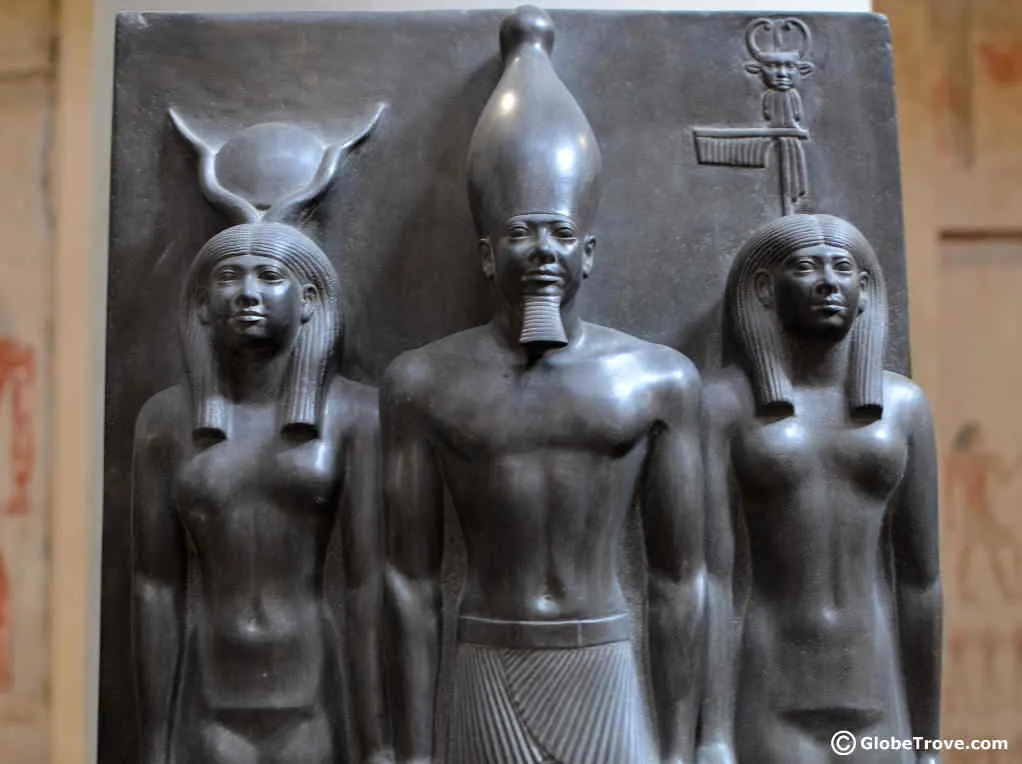I was a tiny tot when my dad, my brother and I sat binge watching The Mummy. I remember thinking how cool it would be to visit Egypt but then scratched it off my list as impossible. Two decades later I find myself wandering about Egypt.
So, for me it was quite literally the stuff of dreams. With so much travel packed into the preceding weeks I had little time to make a detailed plan. What I did know was that the Egyptian museum in Cairo was something that I could not miss.
Everybody who had visited Egypt said that they had loved it. So, I bumped it to the top of my list and it eventually became the first place that I visited in Cairo. It is definitely one of those places that you should add to your Egypt itinerary!
This post may contain affiliate links. As an Amazon Associate, I earn a small commission from qualifying purchases at no additional cost to you. Read my disclaimer for further information.
Location, Landmarks And Entrance Fees
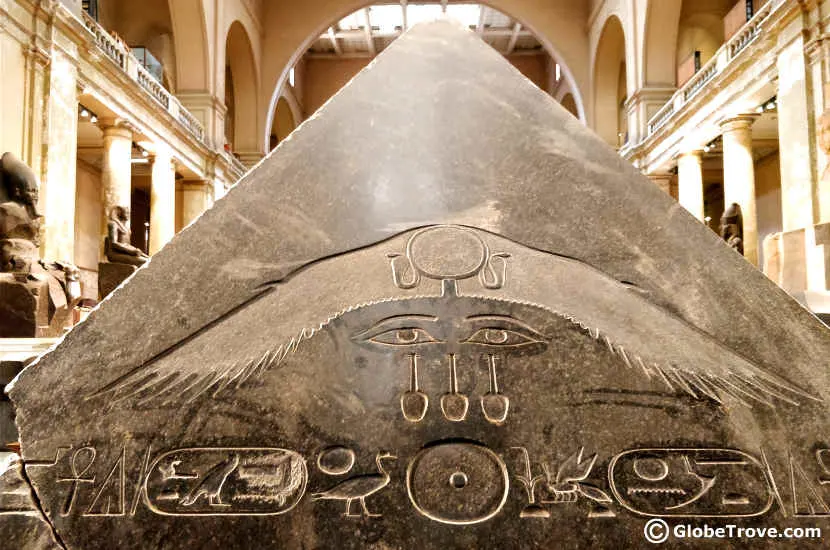
The pyramid capstone is used to cap the top of the pyramids.
The Egyptian museum in itself is an iconic landmark which is hard to miss. It is located in the downtown area of Cairo and is very close to the Nile. Other landmarks in the location are The Nile Ritz-Carlton and the Tahrir Square. I should emphasize that the museum is going to shift by end of 2018.
The entrance fees into the Egyptian Museum are dependent on whether you are a local or a foreigner. The fees for locals is much much cheaper. I paid an entrance fee of 120 LE for myself and 50 LE for my camera. The board states that if a person is caught clicking photographs without a ticket or with flash a fine will follow.
If you want to visit the Mummy rooms then you need to add another 150 L.E. There is another option on the table. That is a combined ticket for the Museum and the Mummy rooms. It costs 240 L.E.
The Layout Of The Egyptian Museum In Cairo
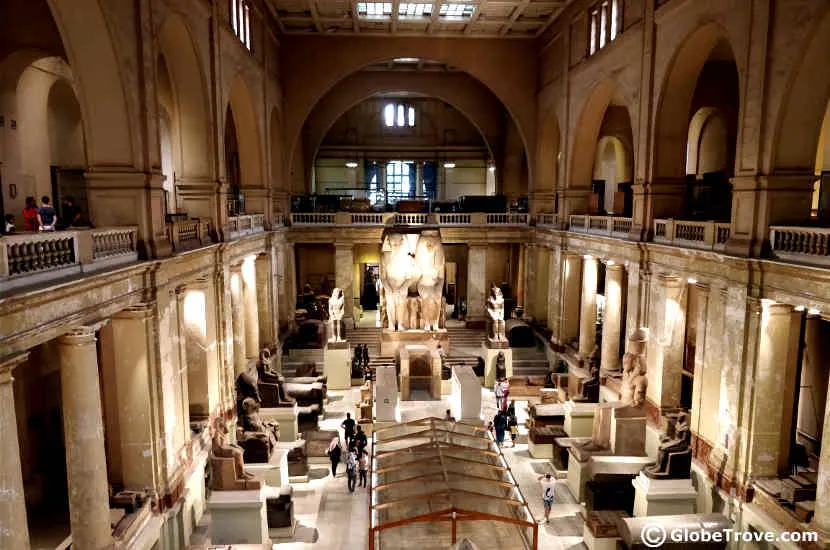
The main hall of the Egyptian museum has some of the largest artifacts.
Imagine a large rectangular shaped building with two floors and you know what the interior of the Egyptian museum looks like. A lot of people will tell you that the museum is very big and so it is. It however is not comparable in size to the Louvre in Paris or the Hermitage in Moscow.
That being said, you can cover the entire museum bit by bit in 3-4 hours. Let me tell you a good strategy so that you don’t miss a bit.
Quick tip: There are a lot of guides who try to catch your attention as you enter and some while you are inside. The guides do add a flavour to the stories, but you don’t really need them.
The vast majority of the items in the Egyptian Museum in Cairo are labelled in English and Arabic. There are even some places where you will find translations in what I think is French.
The Ground Floor
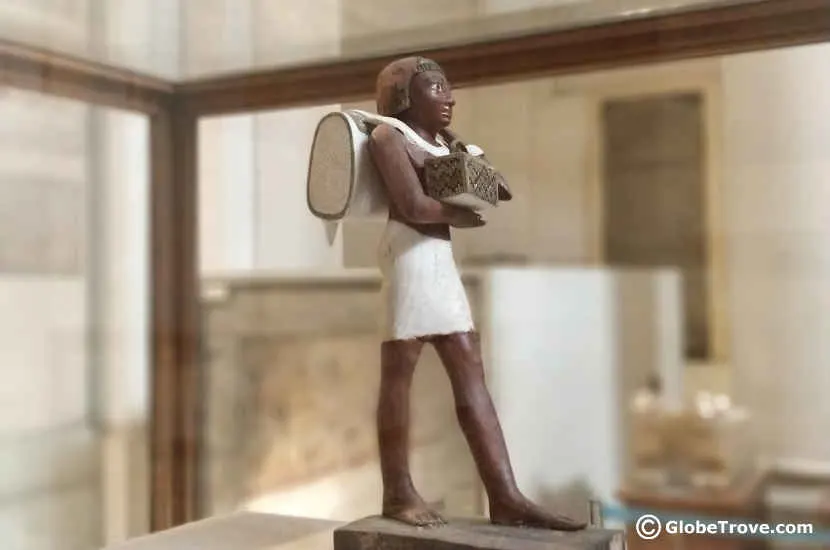
You can see how detailed the sculptures were way back in ancient Egypt.
The ground floor contains most of the large artefacts that were found in the tombs of the kings. It has been divided depending on the age in which the people lived. I am not well versed in the different ages so I’m not going to get into that. I will however give you a general idea of what you will find here.
Stone sarcophagus’, large and small statues of kings, scribes and even of the gods, large boats etc are lined up in different parts of the museum. Each of these statues has a story. Even the tiniest one could be as old as 50 centuries. That is why going through the place with a fine-tooth comb is so interesting.
Getting Around The Ground Floor Of The Egyptian Museum
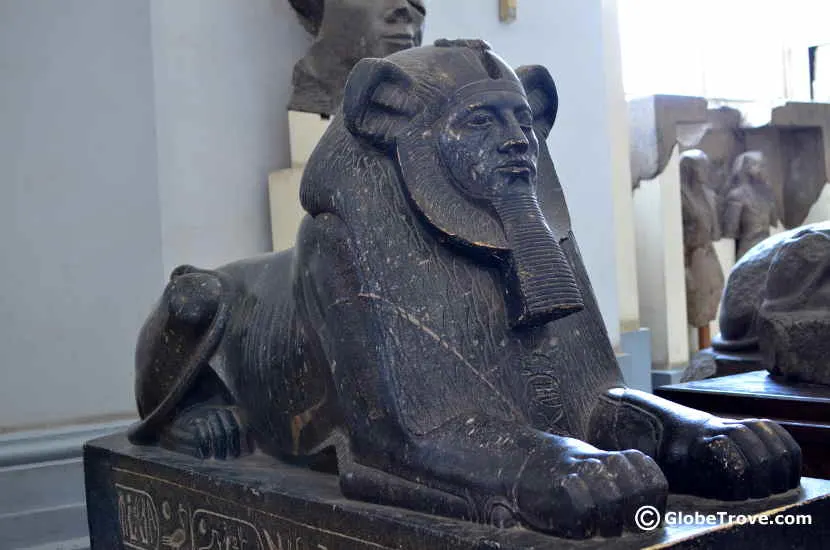
The sphinx in Giza isn’t the only sphinx in Egypt.
The ground floor of the building can be divided into five sections. Each one parallel to the next. The middle section (Third section) being the main hall with the largest artefacts. I started with the corridor on the extreme left.
As you walk down this corridor, you have access to the artefacts in the first two sections of the ground floor of the Egyptian museum in Cairo. From what I understand, the left sections hold the treasures that are the oldest. They belong to the Old and Middle Kingdom.
The last room in the second row is where the New Kingdom begins. As you exit out of the corridor you will find a room that spans all five sections. This has the displays of the New kingdom.
From the first two sections I made my way to the last to sections. I.e. Section four and five. The first room in section four is a continuation of the New Kingdom. As you head down the corridor you can visit the rooms on your right which ae part of section four and the artefacts in section five. The remaining rooms are for the late period, the Graeco Roman period, The Meroitic Numbian period and the Ptolemic period.
With this done you will find yourself back at the main entrance. It’s now time to enter the main hall which houses the largest artefacts in the museum. Two large boats flank the hall on either side. You wouldn’t think much of them but considering their size and the fact that wood was very expensive (and not available) in ancient Egypt meant that the boats were expensive.
The large 20,000-ton statues of Amennotep III, his wife and three children however is the artefact that demands attention.
The First Floor Of The Egyptian Museum
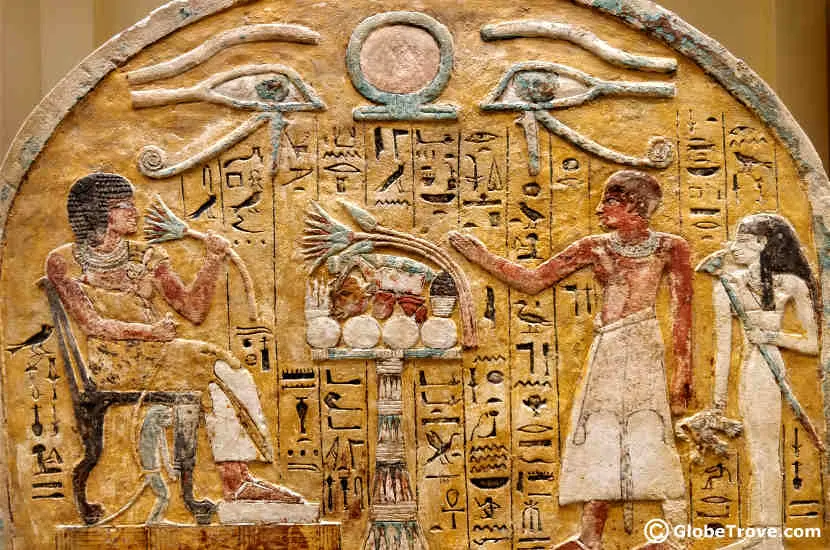
A lot of the hieroglyphs on the first floor are beautiful.
Once you are done exploring the ground floor, you will find yourself at the back of the museum. Take the stairs to head up to the first floor. The stairs to the left (near the exit) is where the restrooms are, in case you need them.
The first floor of the Egyptian museum has a lot of interesting stuff. Tiny statues, day to day articles that the Egyptian’s used, mummies and more. I would advise going through the first floor in quite the same manner as you did for the ground floor.
The only exception is that as you weave your way around, do not forget to move towards the central balconies. Not only do they give you a great view of the lower museum, they also have some of the mummies on display.
Things You Should Not Miss
The relics of King Tutankhamun’s tomb are on display in one of the rooms on your left-hand side. You can see large golden boxes in front of it. These were part of the tomb that he was buried in. Photography isn’t allowed inside the room.
Most of the jewelry is ornately carved. It is amazing to look at. Don’t forget to visit the section of the museum dedicated to the mummies. It is the same section but on the opposite side of the room. You need a separate ticket to enter. Just remember that there are two separate rooms that house the mummies.
The Egyptian museum really inspired me. My time spent there helped me write my book The Elfin Pyramid.
Speaking of books, Egypt has inspired a lot of writers. Here are some cool books about the country that you should check out.
The Egyptian museum is a fascinating place to visit. It reminds you of the accomplishments of the past and how life goes on. I can’t help won. dering what people of the bygone eras would think of the world today. What do you think?
*This post contains Affiliate links

